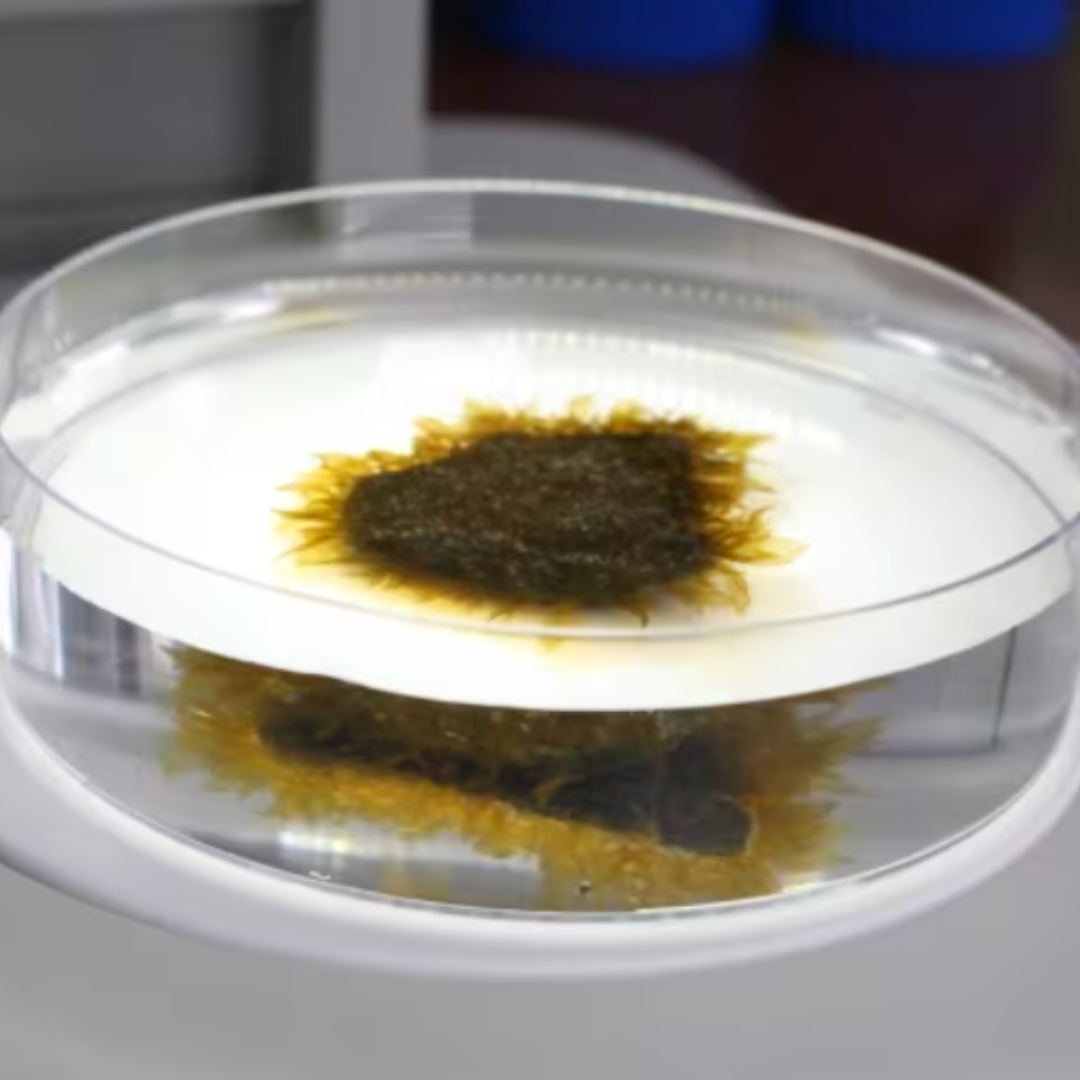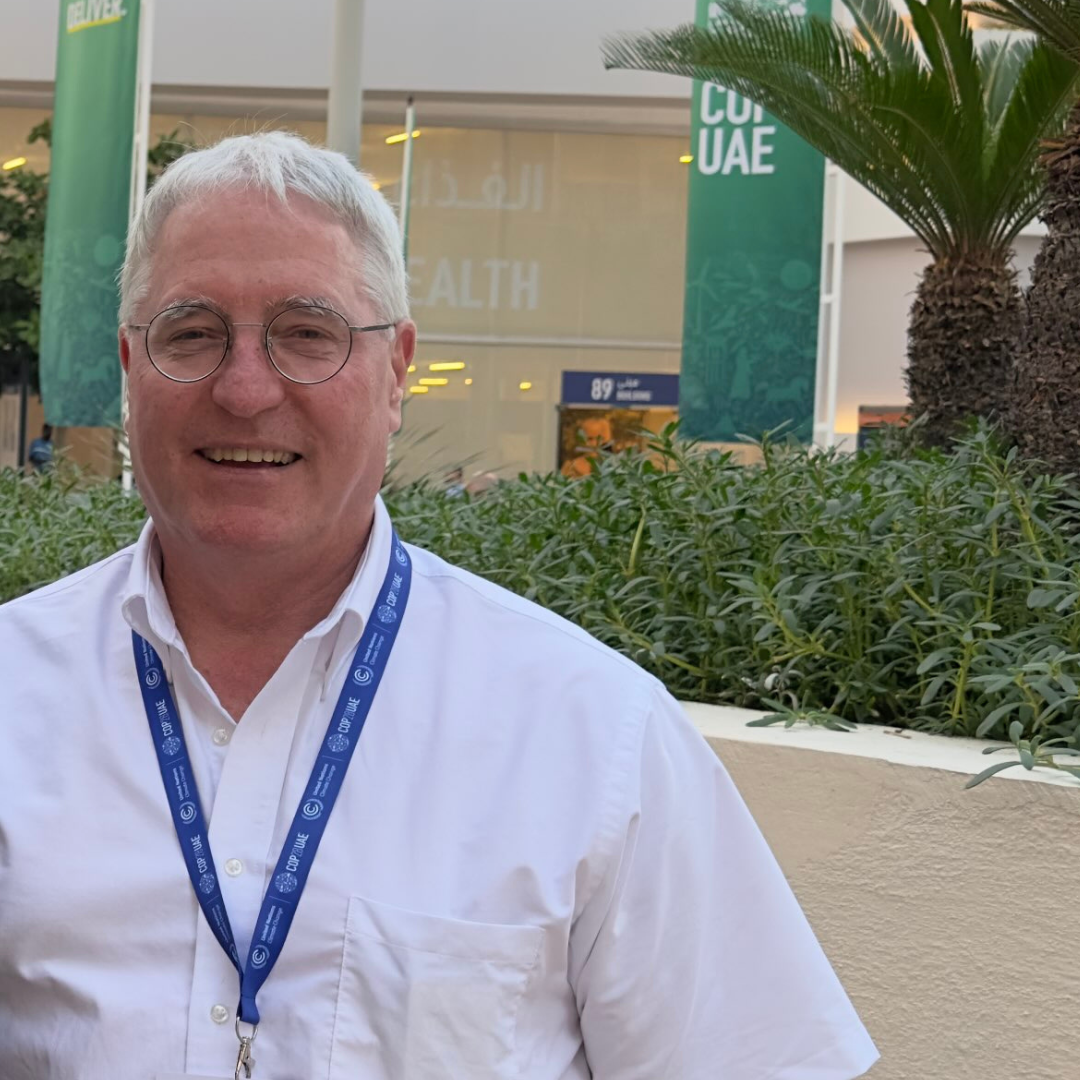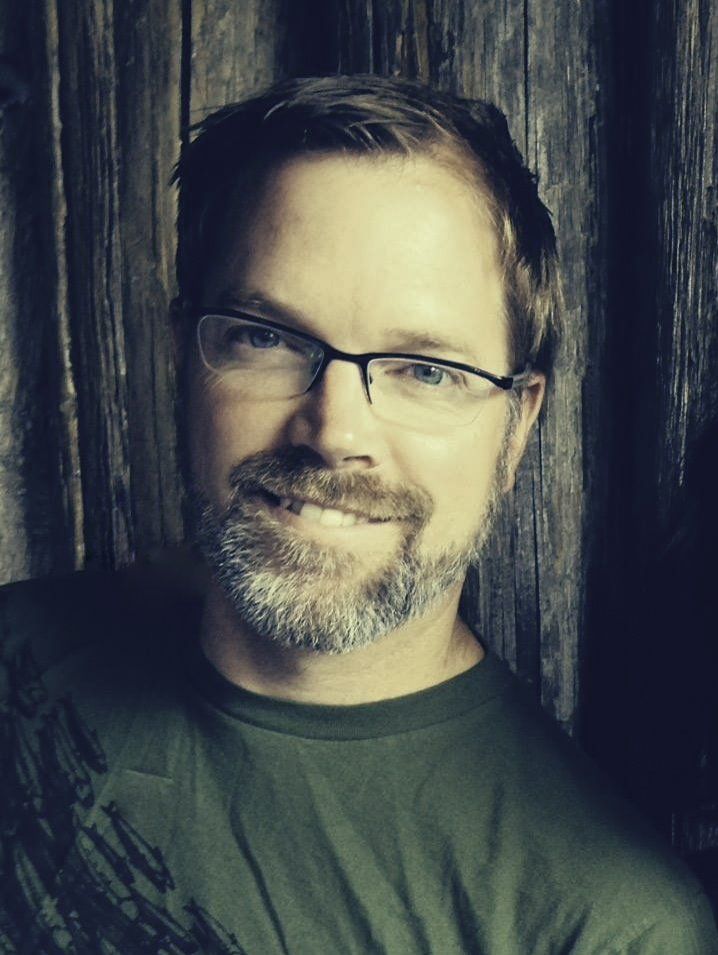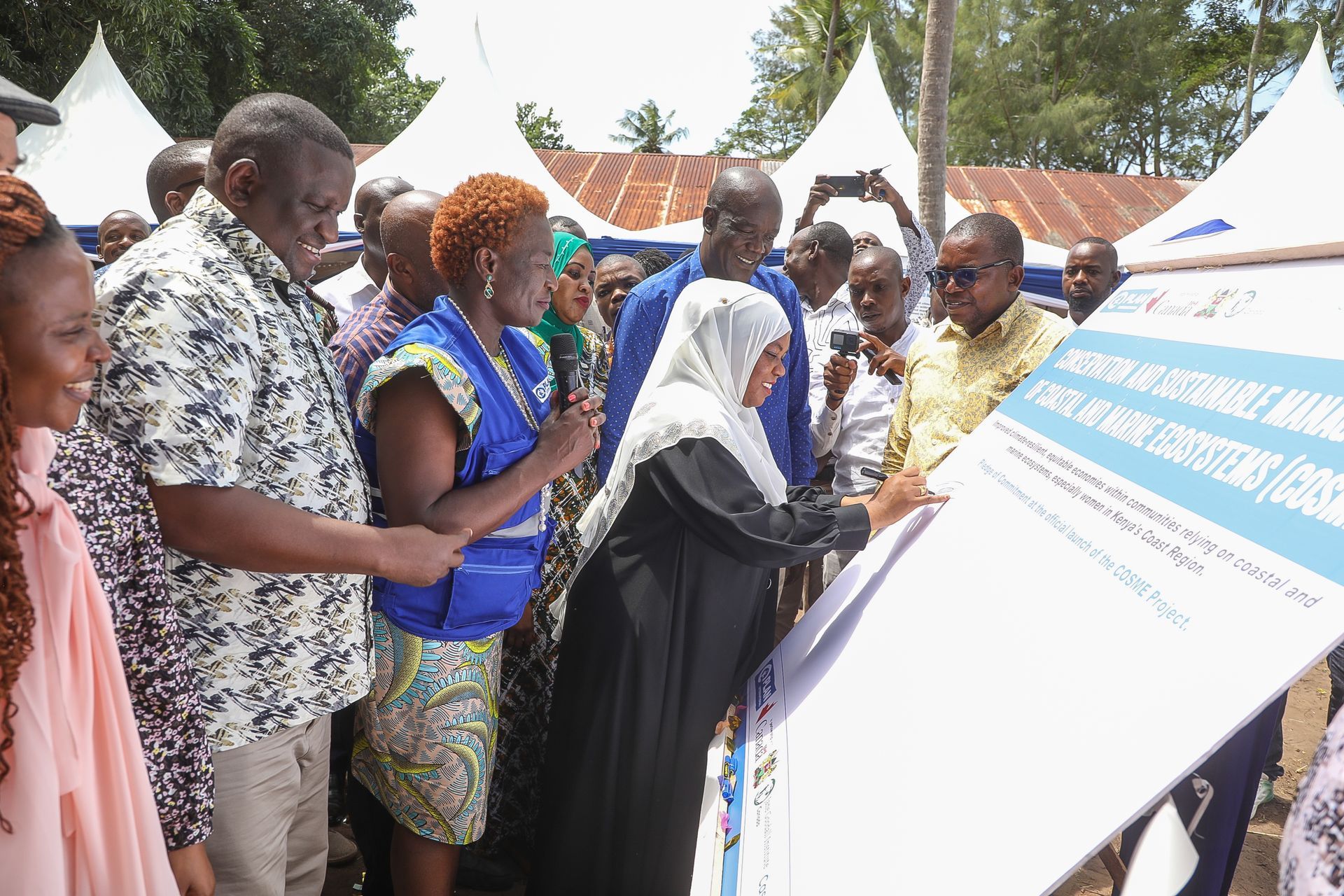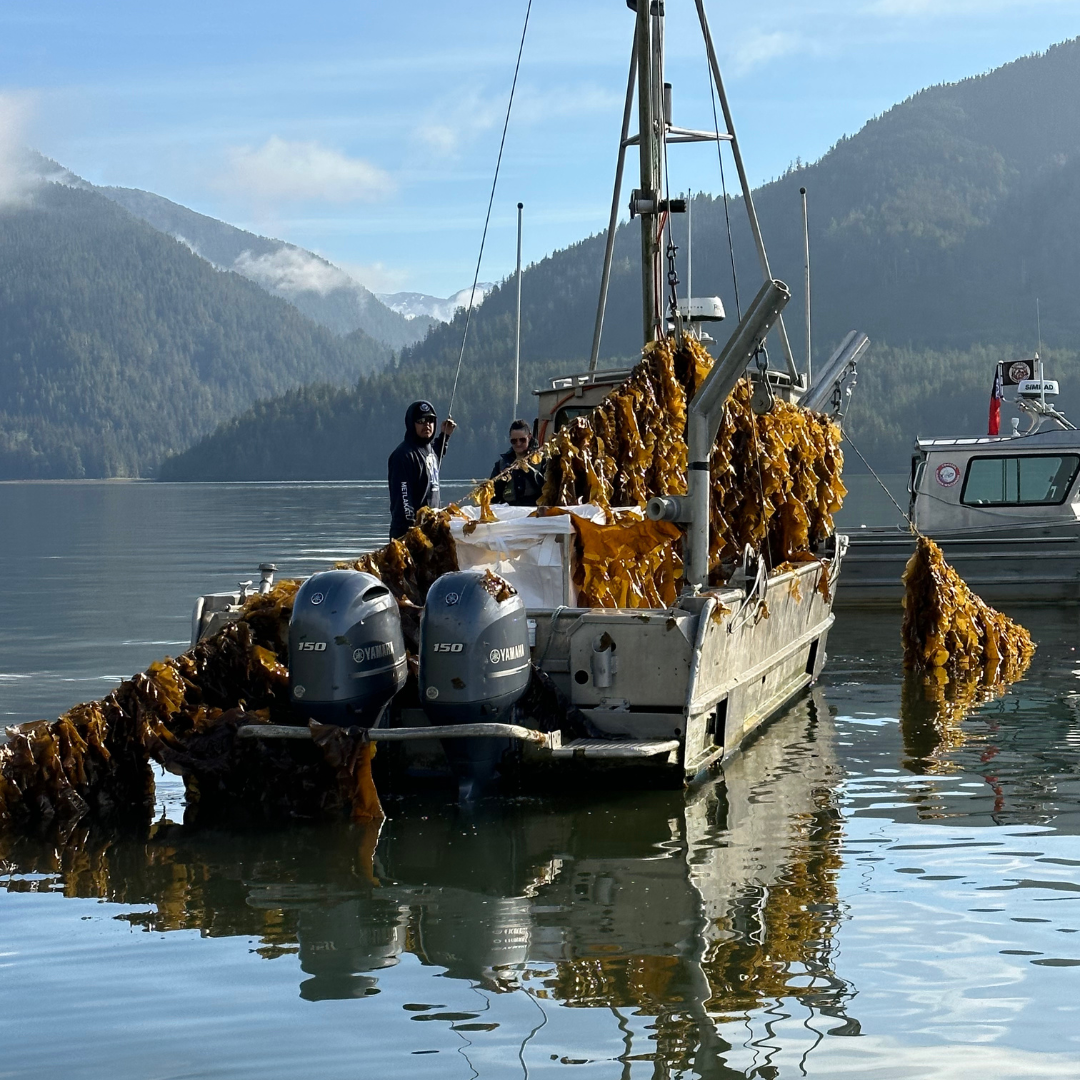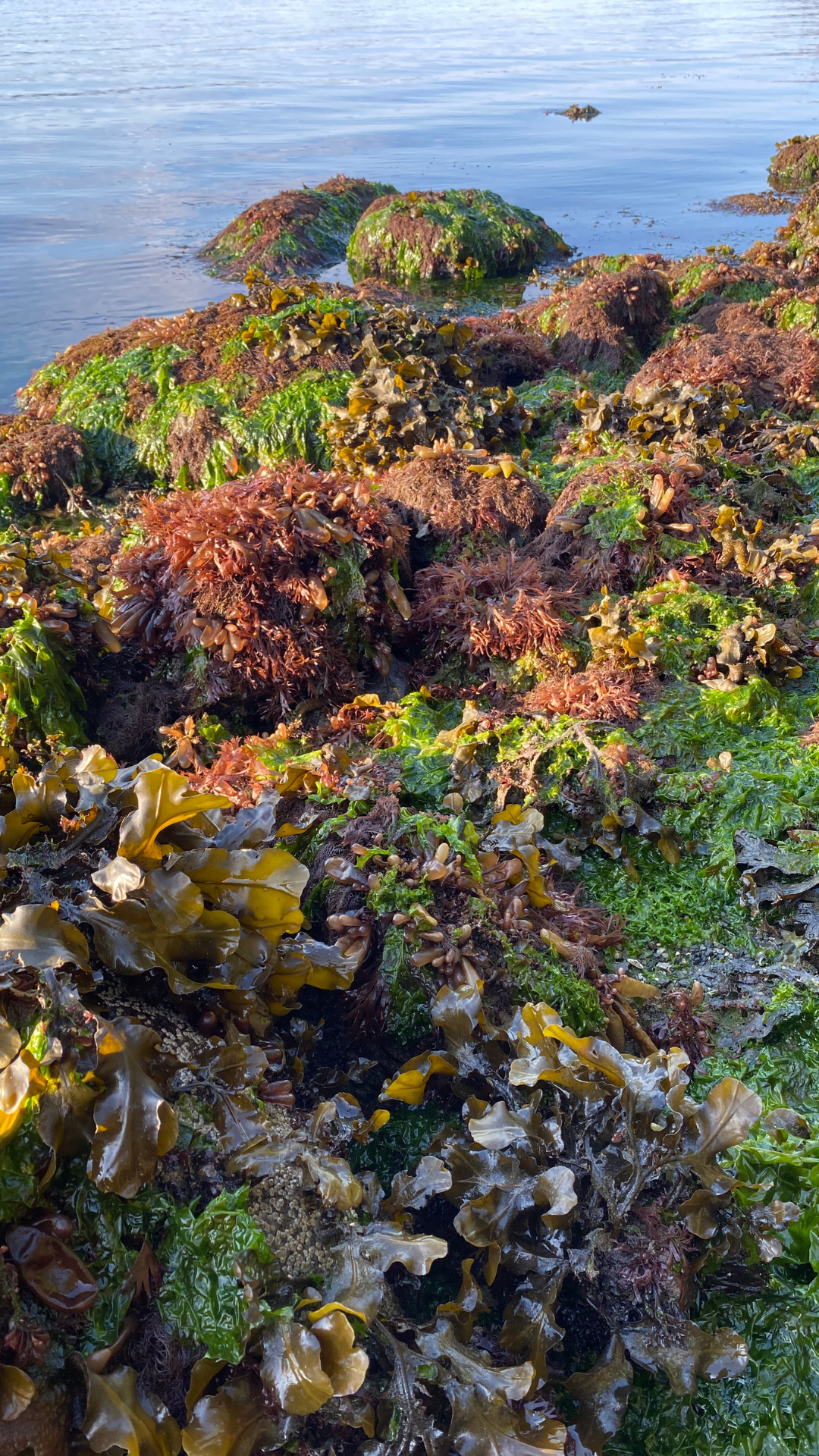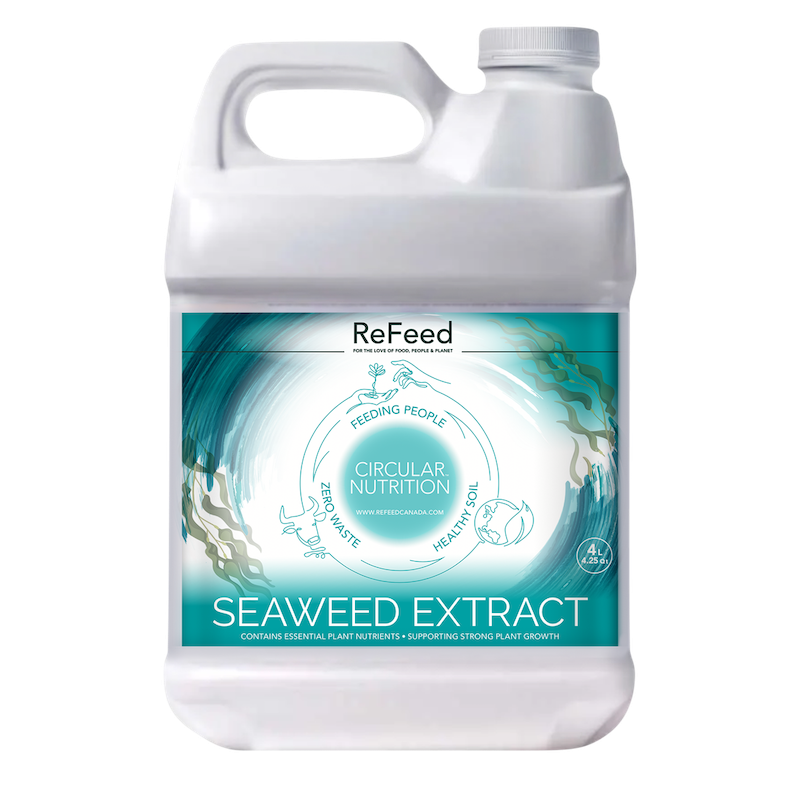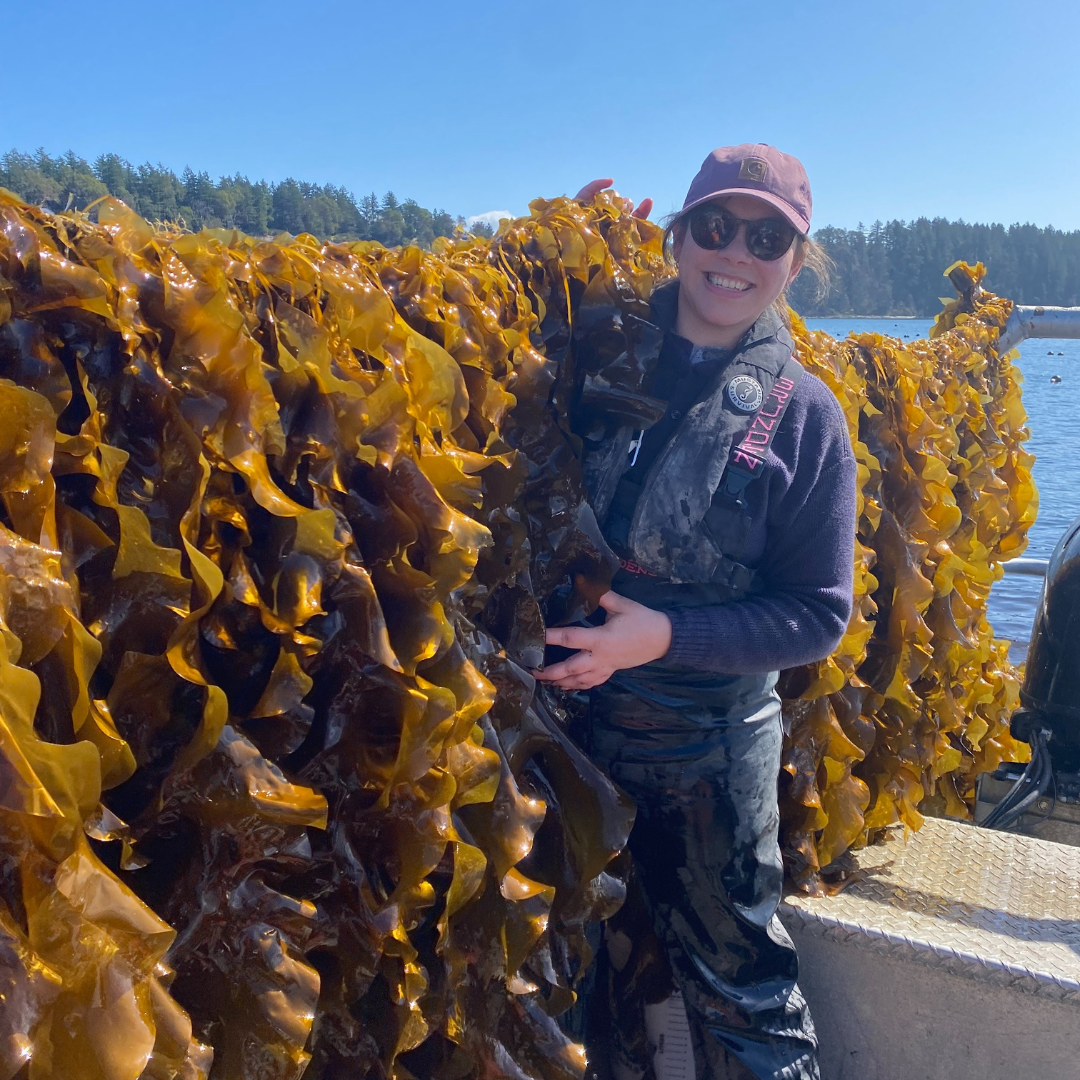At Cascadia Seaweed, we cultivate local species of seaweed and manufacture products for crop and cattle farmers.
The Creation of A Kelp Farm
Kelp has been cultivated for decades in coastal waters across many continents. Designs are varied and are largely a function of water depth and coastal zone morphology. In British Columbia folks have been designing farms for the last four decades. Most local designs take the form of a grid, likely to maximize production within a given hectare.
Cascadia talked with the kelp pioneers in BC and decided to use a scaled-up grid with production lines running across the long access of a taught rope frame held in place between anchors and large foam-filled floats. The infrastructure of a kelp farm is something that has to be built from the anchor up. That was the starting point of our initial farms.
Our COO, Tony Ethier, has decades of experience in putting equipment in the water and having it stay! He has worked in most of the world’s oceans and in very deep waters. Tony brought his experience to the table and designed the building instructions and the bill of materials for the farms. The Cascadia team along with citizens of the Unchucklesaht and Ditidaht First Nations gathered in a converted high school owned build the rope grid.
Cut lines, ropes and hardware were purchased from local vendors and delivered onsite. The group set about to perform a variety of splices rope-to-rope, rope terminations, rope-to-hardware such as thimbles, hearing clips and chain. Want to know what a fid is? Just ask Tony. At the end of the day more than 1000 splices were made in support of over six kilometers (20,000 feet for the non-metric inclined) of line.
Next for the ongoing agenda in planning for the build of 10 times the production line due to be in the water before the end of 2020.
Cascadia talked with the kelp pioneers in BC and decided to use a scaled-up grid with production lines running across the long access of a taught rope frame held in place between anchors and large foam-filled floats. The infrastructure of a kelp farm is something that has to be built from the anchor up. That was the starting point of our initial farms.
Our COO, Tony Ethier, has decades of experience in putting equipment in the water and having it stay! He has worked in most of the world’s oceans and in very deep waters. Tony brought his experience to the table and designed the building instructions and the bill of materials for the farms. The Cascadia team along with citizens of the Unchucklesaht and Ditidaht First Nations gathered in a converted high school owned build the rope grid.
Cut lines, ropes and hardware were purchased from local vendors and delivered onsite. The group set about to perform a variety of splices rope-to-rope, rope terminations, rope-to-hardware such as thimbles, hearing clips and chain. Want to know what a fid is? Just ask Tony. At the end of the day more than 1000 splices were made in support of over six kilometers (20,000 feet for the non-metric inclined) of line.
Next for the ongoing agenda in planning for the build of 10 times the production line due to be in the water before the end of 2020.


By Erin Bremner-Mitchell
•
16 Jun, 2023
Seaweed’s greatest potential to be both commercially successful and environmentally positive is using it as a biostimulant in order to increase terrestrial crops yields, while reducing the traditional agriculture sector’s reliance on chemical fertlisers, rather than as a means of sequestering blue carbon.
C - 9774 Third Street Sidney British Columbia V8L 3A4
Email: info@cascadiaseaweed.com
Phone: 1-778-351-4484

9774 - C Third Street Sidney British Columbia V8L 3A4
Email: info@cascadiaseaweed.com
Phone: 1-778-351-4484

